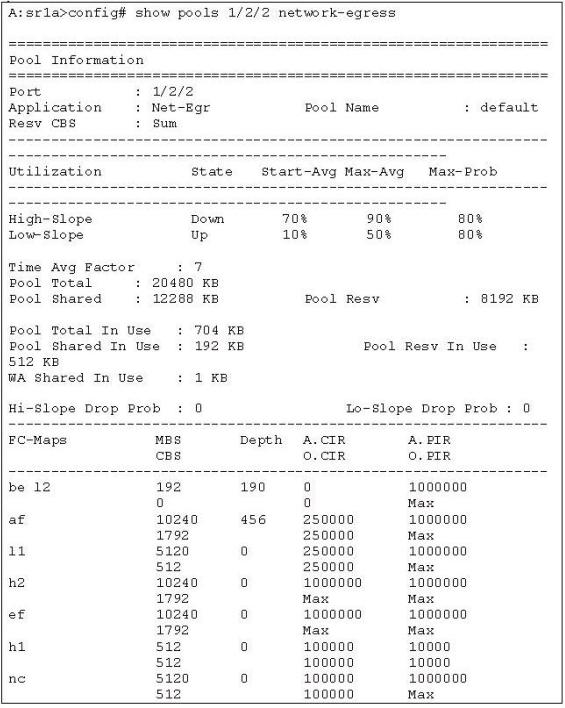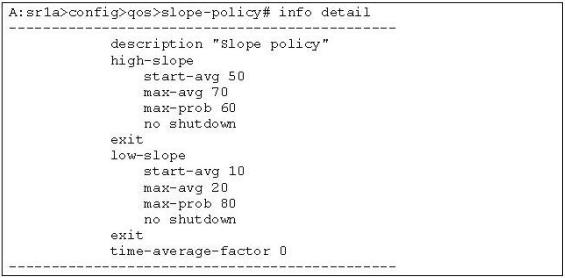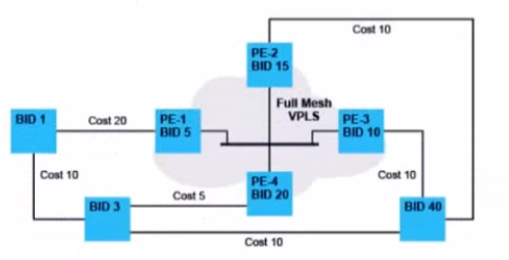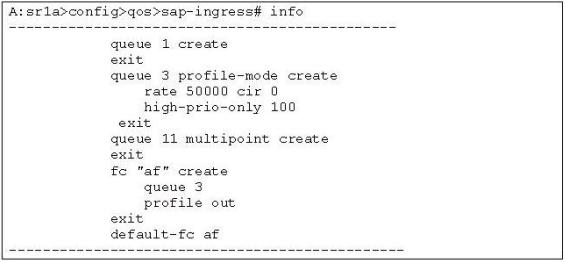Nokia 4A0-C02 - Nokia SRA Composite Exam
Which of the following statements describe the operation of WRED on the Alcatel-Lucent 7750 SR? (Choose three)
Click the exhibit button below. Given the output of the #show pools 1/2/2 network-egress command on a GigE port, what can the service provider deduce? (Choose two)

Click the exhibit button below. Given that the slope-policy (below) has been enabled and applied on a network port, which of the following statements are TRUE? (Choose three)

Which of the following statements are TRUE? (Choose two)
Which of the following identify the port roles of the mesh SDPs?

A)

B)

C)

D)

Which of the following statements regarding scheduling on the Alcatel-Lucent 7750 SR is TRUE? (Choose two)
Click the exhibit button below. A service provider has applied the SAP-ingress policy configuration below on his customer's SAP. The service provider notices that all of the customer's traffic is being dropped at the SAP-ingress. Which of the following actions can resolve the problem, if applied on its own? (Choose three)

It is necessary for Tier 1 schedulers to obtain bandwidth from a higher tier scheduler.
If traffic is destined to queue 5, which has a high-priority-only value of 0 in the network-queue policy, all out-of-profile packets will be dropped.
WRED can be used to help avoid TCP slow-start synch problems.
When using an egress port scheduler, on which scheduling loop are orphaned queues serviced?



